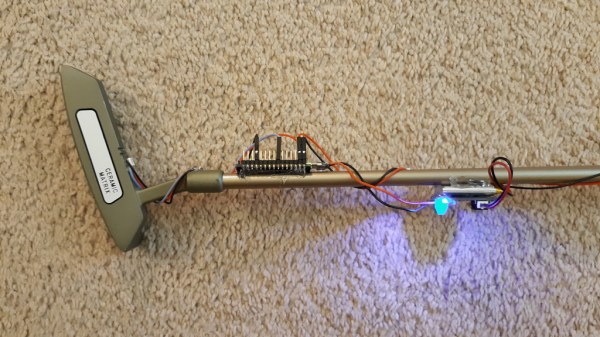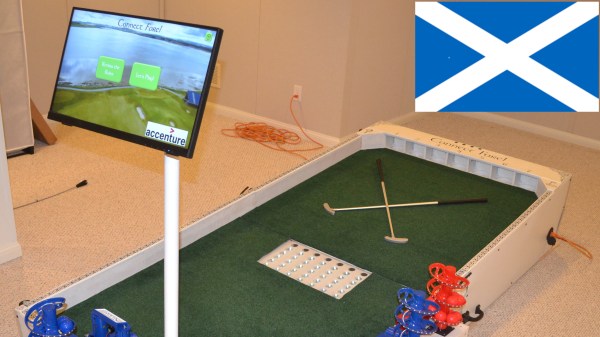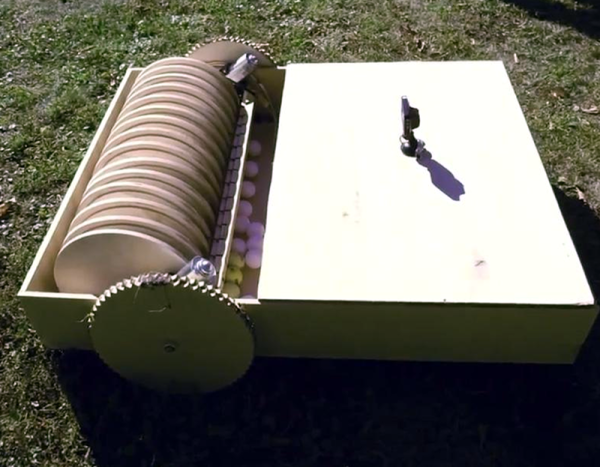Any golfer will attest that the most impressive looking part of the game—long drives—isn’t where the game is won. To really lower one’s handicap the most important skills to develop are in the short game, especially putting. Even a two-inch putt to close out a hole counts the same as the longest drive, so these skills are not only difficult to master but incredibly valuable. To shortcut some of the skill development, though, [Sparks and Code] broke most rules around the design of golf clubs to construct this robotic putter.
The putter’s goal is to help the golfer with some of the finesse required to master the short game. It can vary its striking force by using an electromagnet to lift the club face a certain amount, depending on the distance needed to sink a putt. Two servos lift the electromagnet and club, then when the appropriate height is reached the electromagnet turns off and the club swings down to strike the ball. The two servos can also oppose each other’s direction to help aim the ball as well, allowing the club to strike at an angle rather than straight on. The club also has built-in rangefinding and a computer vision system so it can identify the hole automatically and determine exactly how it should hit the ball. The only thing the user needs to do is press a button on the shaft of the club.
Even the most famous golfers will have problems putting from time to time so, if you’re willing to skirt the rules a bit, the club might be useful to have around. If not, it’s at least a fun project to show off on the golf course to build one’s credibility around other robotics enthusiasts who also happen to be golfers. If you’re looking for something to be more of a coach or aide rather than an outright cheat, though, this golf club helps analyze and perfect your swing instead of doing everything for you.



















